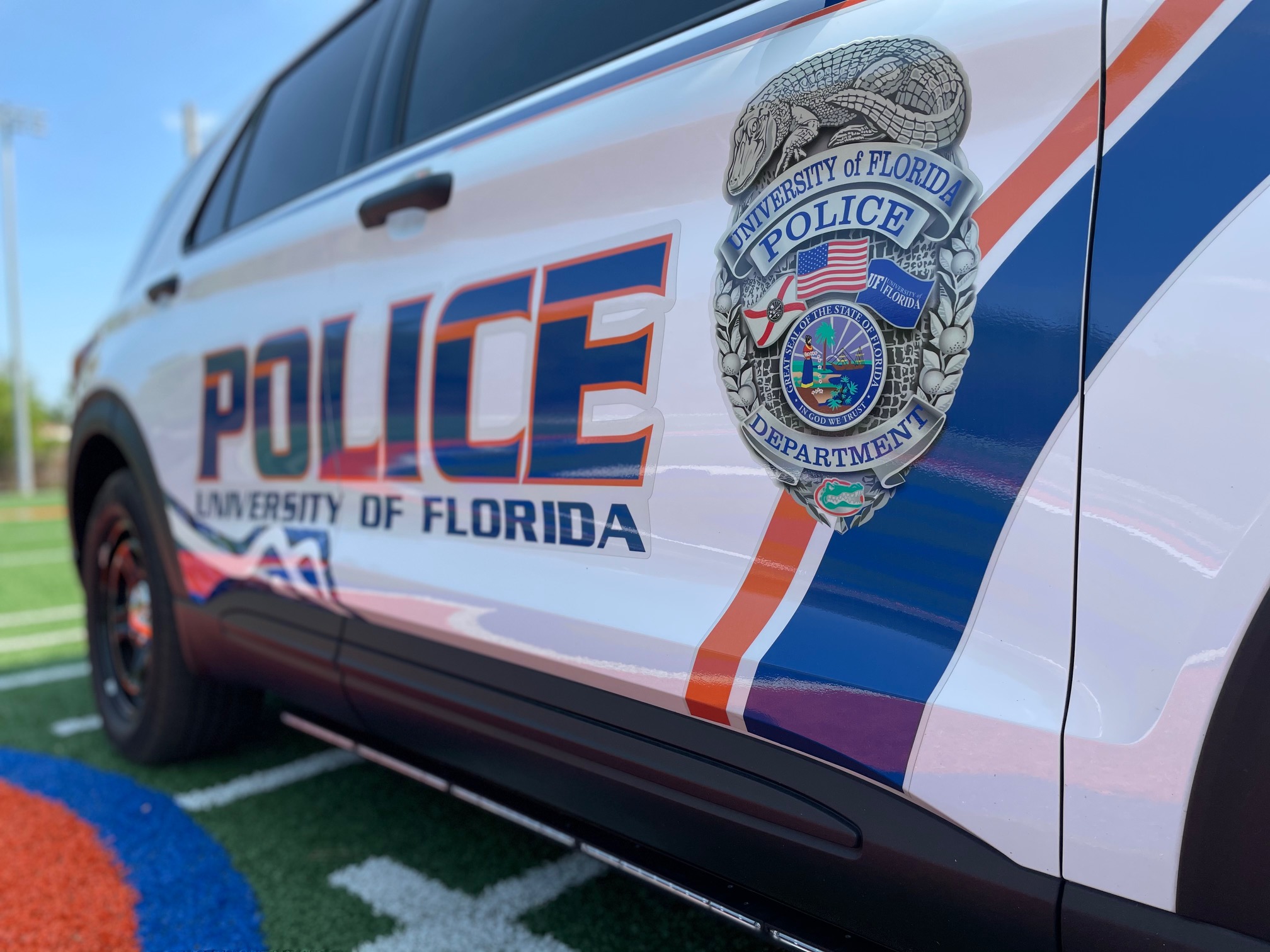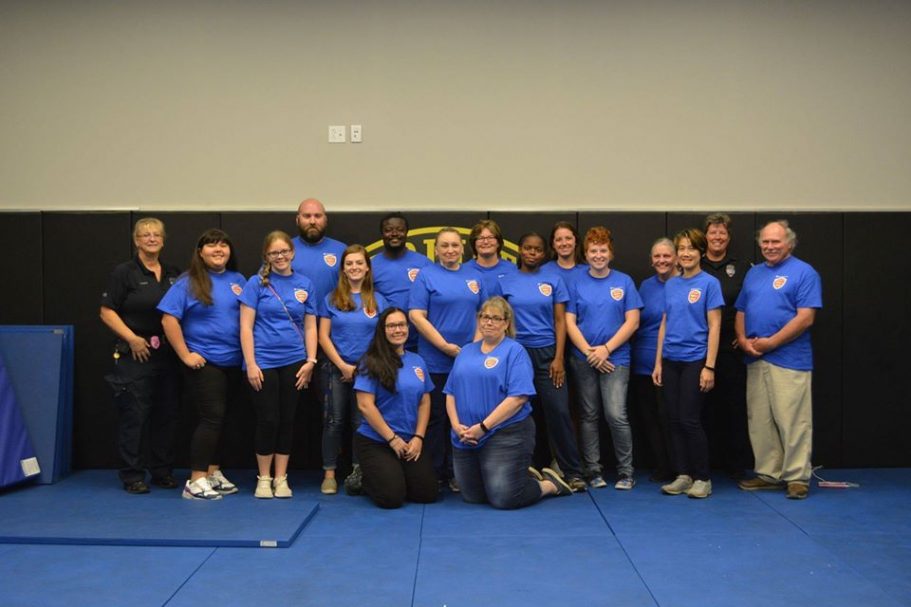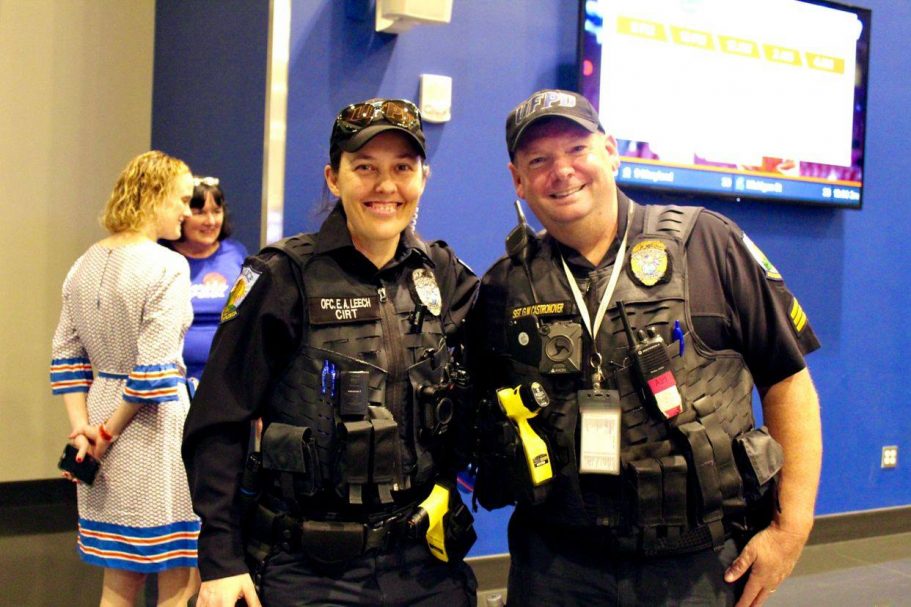- Homepage
- How Do I?
- Brochures & Safety Tips
- Child & Parent Safety
Child & Parent Safety
Halloween safety tips
As Halloween approaches, the University of Florida Police Department would like to remind everyone that safety should always be a priority. As part of our continuing safety tip program, we are providing the following links to the Halloween Safety Tip web sites we found most informative.
http://childrensafetyzone.com/safety/halloween-safety-tips/
Crime prevention for children
Nationwide thousands of children are victimized by crime each year. Locally and on campus children become victims of crime. By teaching children basic tools to avoid crime those numbers may be reduced. Here are some tips to teach your children.
For the parents
Street Smarts
- Walk with your child the first few days of school and pick out the safest route.
- When possible, have your child walk to school with a friend or groups of other children.
- Always use crosswalks and obey the traffic lights when crossing the street.
- Do not teach your child to take shortcuts to school.
- Teach your child to watch his/her surroundings while walking to school or any other time he/she are out in public. If he/she thinks they are being followed they should go to a safe place (an open business, a friend’s home, a relative’s home, a police or fire station, etc.)
- Teach children if something does happen to yell as loud as possible “STOP IT! LEAVE ME, ALONE!” Instruct them to start kicking, biting, and hitting the person hurting them. The child should run away as soon as possible and continue yelling.
- Tell your child to never get close to a car with a stranger in it or talk to strangers on the street. He/she should never tell a stranger their name or address unless he/she needs help from them. Instruct him/her to have the stranger call mom or dad, a relative, the police, or fireman and to stay out where other people can see them when they need help.
- Remind children not to accept anything from a stranger.
- Do not allow your child to wear clothing with their name on the front where others can see it.
- Remind children to stay in well-lighted areas as much as possible after dark.
- Instruct your child to walk in the middle of the sidewalk when they are alone.
- Be sure your child knows what to do if someone in a car stops to ask a question and wants him/her to get close to the car. Instruct them to say, “I don’t know.” and keep walking.
- If your child feels something is wrong, instruct him/her to trust their instincts. He/she should go to the nearest safe place and tell a worker that they are scared and have them call their parents or the police.
School Smarts
- Do not allow your child to wear or take expensive jewelry or clothing to school.
- Do not allow your child to take more money than needed to school.
- Do not allow your child to put money in their book bag. Teach children to put their money in a pocket.
- Teach your child not stay alone in hallways between classes.
- Teach your child to tell a teacher or parent if they see a stranger around their school.
Play Smarts
- Teach your chiled to ride their bicycle with a group of friends.
- Warn your child against riding in deserted areas.
- Don’t allow your child to ride their bicycles at night without a parent or adult.
- Practice how to handle scary situations. Make sure your child knows what to do if something wrong happens. Teach him/her to yell and scream while they are running to safety.
- Teach your child to lock their bicycle while they go into a store or home.
- Don’t allow your child to play alone on playgrounds. Make sure they understand that they must leave when the other children do.
- Teach your child not to play close to restrooms.
- Teach your child about the buddy system, if they need to go to the restroom, be sure they have someone go with them. Instruct him/her to let a parent or baby-sitter know before they go alone.
For the children
Home Smarts
- Teach your child to always have their key ready before they get to the door if it is necessary to unlock an outside door when they get home.
- Teach your child what to do if a stranger is seen near their door or following them when you are not home. DO NOT GO TO YOUR HOME OR APARTMENT. Go to a relative or friends home, a known neighbor.
- Always lock the door behind you.
- Do not open a door for a stranger. Call the police (911) if a stranger tries to talk you into opening the door.
- If you are home alone keep the radio or television on.
- Never tell anyone you are home alone.
Bicycle Smarts
- ALWAYS WEAR YOUR HELMET!!!
- If you have to ride in the road ride on the right side as close to the curb as possible.
- Obey all traffic signs.
- Look both ways before you pullout onto the street.
- Use hand signals when you are stopping or making a turn.
- Always let people walking go first.
- Before you ride your bike, check your brakes, tire pressure, and make sure your handlebars are not loose.
- If you have to ride at night always wear something reflective.
- If you ride at night Florida Law requires you to have a front light and rear light.
Phone Smarts
- If someone calls you and says bad things over the phone hang up. Do not talk to them.
- If your parents are not home and someone calls who you don’t know, never tell them you are alone.
- If your parents are not home and someone calls who you don’t know, don’t tell them your phone number or where you live.
- Always let your parents talk to salesmen or repairmen over the phone. Don’t give them any information.
- Always tell your parents when someone calls.
- If someone scares you on the phone and your parents are not home, call the police.
A parents guide to gangs
Gangs have been of concern to people in cities and towns all over the country. Locally, there has been concern about the formation of gangs in our area. If you have information concerning activity you believe to be gang related please contact your local law enforcement agency.
What gang members do isn’t kid stuff, and it’s not a harmless phase that they are going through. Gang members steal and destroy property and commit many violent crimes. As parents, we need to know why our children are joining gangs, and the warnings signs that may indicate gang membership. Here are some tips for spotting possible gang involvement by your child.
Why Do Kids Join Gangs?
- Because they have low self-esteem
- Because they have a lack of identity
- Because they have a need to feel important
- Because they are seeking companionship or a sense of belonging
- Because they are looking for security
- Because they lack other positive alternative activities, like sports
- Because they lack parental involvement
- Because they succumb to peer pressure
What Signals May Indicate Gang Membership?
- A change in the style of clothing worn or wearing one particular color often
- Withdrawing from the family
- Declining grades and poor school attendance
- Unexplained money or new possessions
- Tattoos that are affiliated with a gang or group
- Use of nicknames
- Graffiti on their personal things or on their clothing
- Contacts with the police
REMEMBER, JUST BECAUSE SOMEONE IS ON THE THRESHOLD OF JOINING A GANG, OR IS ALREADY IN A GANG, DOESN’T MEAN THAT IT IS TOO LATE TO ESTABLISH POSITIVE ALTERNATIVES!
What Can We Do?
- Establish non-negotiable rules for your family regarding the use of alcohol, drugs, and gang membership
- Establish clear guidelines and limits for your children’s behavior and their activities
- Spend time with your children; do things with them and attend functions in which they are involved
- Respect your children’s feelings and attitudes; help them to develop a strong sense of self-esteem
- If you’re unsure or are in family crises, then seek help from a local agency
- Get to know your children’s friends and acquaintances
- Become involved in your child’s school; meet with the counselors and teachers
- Educate yourself as much as you can about gangs and drugs
School safety
Violence and crime are increasingly a concern for every community, and our schools are not immune. Statistics show that violence in our communities, especially among youth, does appear to have increased. School shootings have left many with the impression our classrooms are danger zones although schools are often the safest places in the community. When violence does occur at school, it impacts students’ and their ability to learn, the staff’s ability to teach and discipline students as well their willingness to stay in the profession. Finally it affects parents’ and the community’s confidence in the schools.
Because violence surrounds schools does not mean violence is in schools. In fact, schools are safer havens for many children than their homes. For example, according to a 1995 U.S. Department of Justice report (Hyman, Weiler, Shanock & Britton, 1995):
- Rape, robbery and assault are about twice as likely to occur in or around the home than in school (23.3 percent home related, 12.1 percent school related in 1993).
- In 1990, 10,565 deaths were due to gunshots; 71 occurred in schools.
- The Los Angeles city homicide rate between the academic years of 1992 and 1993 was 29.30 per 100,000 persons; the rate for the city’s public schools during the same time period was 0.12 per 100,000.
- In 1991, the city of Houston had a homicide rate of 366.5 per 100,000 persons; schools had a homicide rate of 0.71 per 100,000 students.
- In 1991, the aggravated assault rate for the city of Chicago was 1,502 per 100,000 persons; at the public schools the rate was 325 per 100,000 students.
What are School Districts doing?
In an effort to provide students with a safe learning environment and staff with a safe working environment, districts utilize a variety of approaches. Many districts coordinate these programs through comprehensive district-wide safety plans. District safety plans are accompanied by school site safety and security plans tailored to the needs and physical environment of each campus.
Prevention and intervention strategies schools may consider:
- a positive school climate that promotes respect for diversity, personal and social responsibility, effective interpersonal and communications skills, and anger management;
- discipline, including behavioral expectations and known, consistent consequences for violations of school or district rules;
- establish curriculum efforts in alternatives to violence:
- conflict resolution and peer mediation;
- character/values education;
- multicultural education, respect for cultural differences
- parent education, outreach and involvement programs, including strategies to help ensure that parents support and reinforce school rules and to increase the number of adults on campus
- emergency preparedness or crisis intervention policies and plans, including staff responsibilities; evacuation plans; plans for communicating with schools, school board members, parents and the media; and follow-up counseling
- dress codes, including the adopting of uniforms
- avoidance and self-defense training
- anonymous tip boxes and tip line to report crimes and rumors
- peer groups
- increasing alternative programs requiring community service as a graduation requirement
- mentoring programs
- parent/student contracts
- gang prevention programs
- student safety forums
- metal detectors
- video surveillance
- banning of beepers and cellular phones
- elimination or searches of lockers
- student IDs
- closed campuses
- school lock-downs
- parent patrols
- security personnel
- communications devices for staff
- repair of vandalism and graffiti
- on-site suspension
- Saturday work programs
- efforts to increase attendance and decrease truancy
- efforts to prevent the sale and use of alcohol and other drugs
- visitor registration
and - staff training in violence prevention and intervention techniques and in how to implement safety and crisis plans.
Since the recent school shootings, communities across the country have searched for reasons why some kids become violent. Experts believe that stress for events such as domestic violence, alcohol and drugs, and social and academic pressures can send some children over the edge.
Warning signs when considering a troubled child:
- Detachment: A lack of bonding and relating to others.
- Withdrawal or perceptions of hopelessness.
- Threats and efforts to obtain the means and opportunity to carry them out.
- Sudden, significant changes in behavior, appearance, etc.
- Disciplinary problems in school and/or delinquent, criminal activity in schools or communities.
- Unusual interest or preoccupation with weapons, bombs and violent “entertainment” forms (music, movies, etc.)
- Abuse of animals, suicide threats or attempts, self-mutilation, etc.
Through education, parents, school officials and law enforcement must become better prepared to recognize and effectively cope with danger and potential violence in our schools.
Helmet safety for children
In January 1, 1997, Florida a introduced bicycle helmet law requiring children in Florida under the age of 16 to wear a bicycle helmet while riding a bicycle. Here are some tips to about wearing a bike helmet.
- Make sure the helmet fits snugly on the head and doesn’t slip around!
- The helmet won’t work if it comes off your head. Use the strap and wear the helmet in the correct position.
- A helmet should be replaced if it has been involved in a crash.
- Bicycle helmets have shown to reduce head injuries by 85%.
- Helmets protect your head and that means your brain; brain injury is the Number 1 killer and disabler of children in America.
- Remember that in Florida a bicycle must follow the same rules as cars.
This means you must:
- Ride with traffic- on the right side of the road, and use hand signals.
- Stop for stop signs and red lights.
- Don’t ride with a headset on- you won’t hear danger coming.
- Use lights and reflectors at night.
Children and guns
A newly released report by the National Institute of Justice, High School Youths, Weapons, and Violence: A National Survey, finds that 29 percent of high school males surveyed have guns and 50 percent said they could easily obtain firearms. The study also reported that gun possession levels were highest for firearms more suited to hunting and sporting uses (rifles and shotguns) rather than criminal behavior (handguns).
While many studies link weapons to crime, the average respondent for this survey was not involved in serious criminal activity or delinquent behavior: 67 percent had never been expelled or suspended from school; 94 percent anticipated graduating from high school. Fourteen percent reported committing a theft, eight percent a burglary, two percent an armed robbery in the past 12 months. Five percent used a “hard” drug (heroin, crack, cocaine); three percent sold a hard drug; eight percent admitted gang affiliation.
Six percent said they carried a gun outside the home during the past 12 months. For those youth who carried guns, 43 percent said they did so for protection and 35 percent said they were holding it for someone else. Less frequent reasons for carrying guns included scaring someone, getting back at someone, feeling important, or using in a crime.
High School Youths, Weapons, and Violence: A National Survey (NCJ 172857) is available from the National Criminal Justice Reference Service, 1-800-851-3420 and atwww.ojp.usdoj.gov/nij/.





